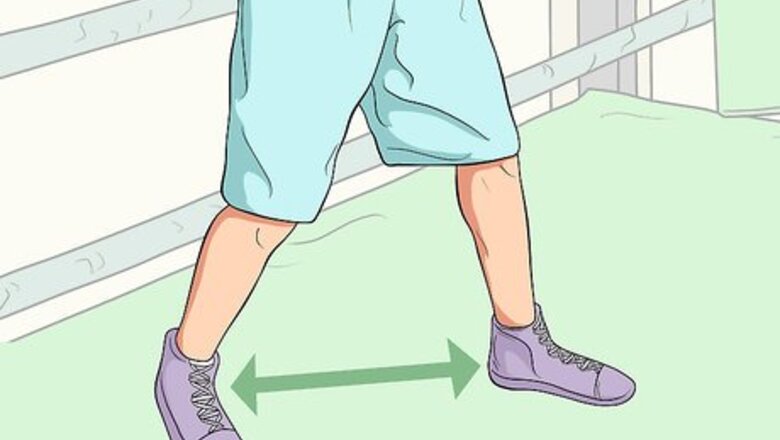
views
Positioning Your Body
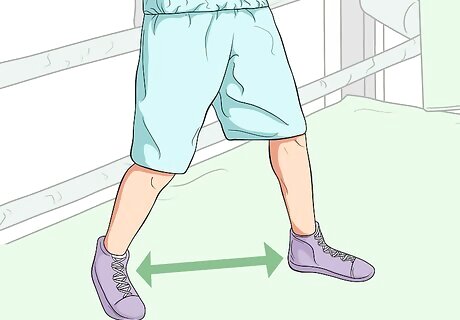
Set your feet shoulder width apart with heel and toe aligned. You will utilize this stance for both offense and defense, which is why it is so important. This width gives you the best ability to move and the alignment will help you move easily. The foot of your non-dominant hand side should be forward. Traditional right-handed fighters should have their left foot forward. Southpaw left-handed fighters should have their right foot forward. If your feet get too close together it will cause you to get off balance. If your feet get too wide then you will take heavy steps and will not be able to move quickly.
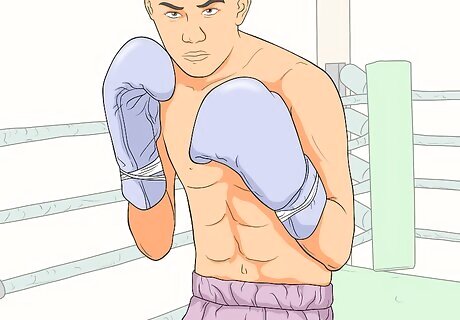
Put your hands up and keep your elbows tight. This is the most common and effective defensive technique. Your gloves should be at about eye level with your palms toward your face. Tuck your elbows close to your body, tight into your ribs. Another arm placement option is to put your non-dominant hand up around the side of your face and your dominant arm across your body between your belly button and your chest.
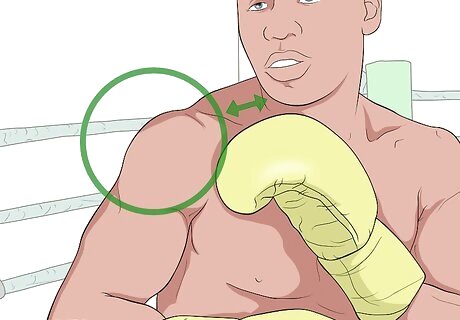
Tuck your chin to your front shoulder. It’s always important to protect your chin from getting hit because it is one of the most vulnerable spots for a knockout hit. With your front shoulder forward of your body, tuck your chin against it. You may not stay like this the whole time, but it’s an important movement to get comfortable with. You should be able to quickly tuck your chin at all times.
Dodging Punches
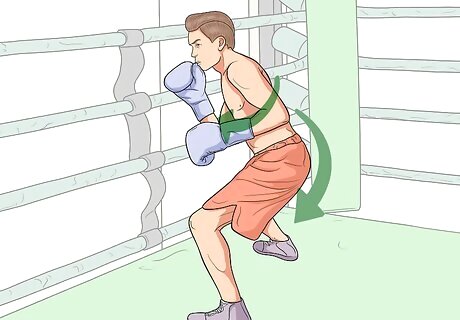
Slip a punch. Slipping involves performing two actions simultaneously. Bend at your waist to lower your upper body. At the same time, twist your torso, bringing your back shoulder toward your front knee. Maintain your glove position during a slip so that you are ready to throw a counter-punch. Doing abdominal exercises will help build your strength to perform a slip seamlessly. Boxers often try to trade punches. However, getting hit will start to take a toll on you throughout the match, so it's best to train yourself to deliver your attack, then get back out of range where they can't hit you.
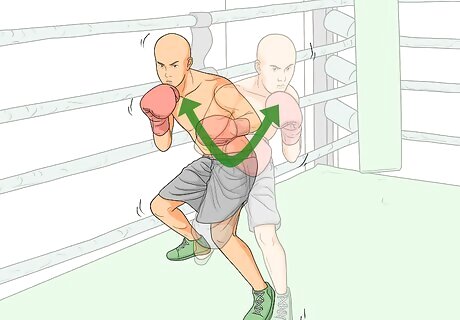
Bob and weave. Start the bob by bending your knees and lowering your entire body. Keep your head and chest up. Move your head in a “V” shape so your head ends up on the outside of the punch. Once your head is outside the punch, straighten your legs again. This technique does not require that you move your feet. You should move quickly during a bob and weave. Practice it often to get the motion and speed timed perfectly. Practice by having an opponent throw hooks at your head. Try bobbing and weaving from one direction to another in alternation, then vary the sequence so that you have to respond to your opponent's punch.
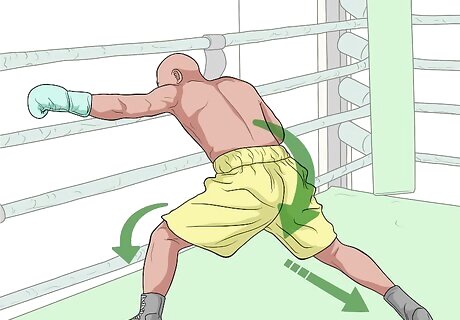
Perform a backward lunge. Slide your back foot backward and bend your front knee slightly. This will effectively lower your whole body as well as create distance between you and your opponent. Keep your eyes on their chest and hands as you lunge. This is not the fastest or most effective dodge, but it is important to incorporate multiple techniques so that your opponent can’t guess your next move
Blocking Punches
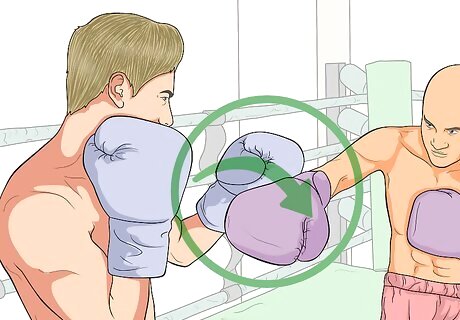
Use a parry to slap a punch away. As the punch comes in, lean your torso back and slap the punch away. Let your opponent’s momentum carry the punch past you. This works best when you slap the punch downward or across your body. If your opponent is throwing a left-handed punch, slap it away with your right hand. If your opponent throws a right-handed punch, slap it away with your left hand. This is most effective when you immediately throw a punch of your own while your opponent is off balance.
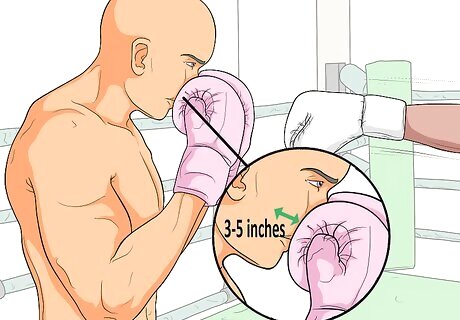
Catch an incoming punch. With your hand in the basic defensive position, your palms should be facing you. As you see the punch coming in, twist your wrist so that your palm faces away from you. Push your hand forward three to five inches to make contact with the punch. Step and lean back slightly to take the impact of the punch. Immediately bring your hand back into your defensive position, or use the hand you didn’t block with to throw a quick punch.
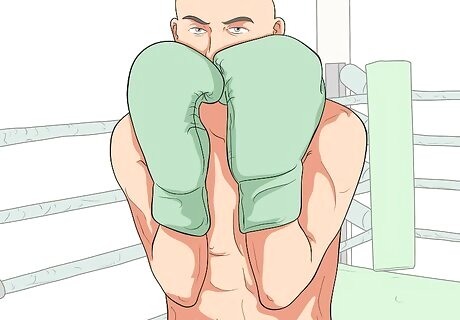
Perform a double arm block. Boxers love this technique for its simplicity. As you see the punch coming in, press sides of your forearms tight together. Raise your arms slightly so that your gloves are just below your eyebrows. Take the impact of the punch and get your arms back into standard position.
Using Other Training Techniques
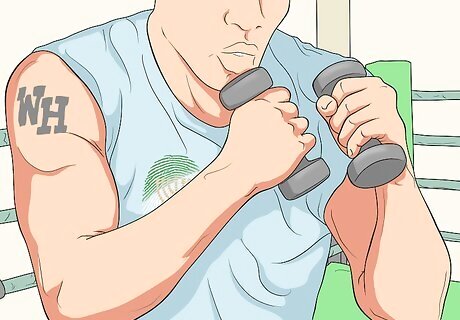
Hold dumbbells while you practice. One of the things that kills your defense is getting tired and dropping your hands down, which leaves you unprotected. The best way to train so that you don’t get tired as fast is to perform all of these defensive techniques while you hold light dumbbells. Your arms will build strength in the muscles that keep your hands up. You can also throw punches while you hold the dumbbells to build up strength behind your punches.
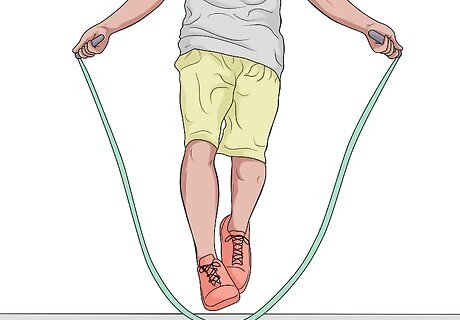
Jump rope every day. Jumping rope is great for overall cardio conditioning and for increasing the dexterity of your feet. It helps you build good footwork and improve your speed in the ring. Switch up the jump rope exercises you do by jumping on both feet, then a few jumps on your left foot, and a few on your right foot. Push yourself to get more jumps without stopping. You can also incorporate more complex moves like butt kickers, high knees, or skips into your jump rope routine.
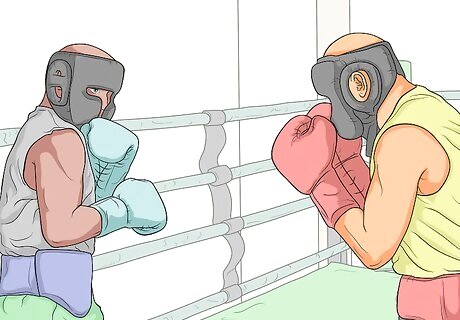
Spar with an opponent and focus on defense rather than attack. Sparring is important to implementing all of the defensive techniques you’ve learned. Don’t try to beat your opponent during sparring, but try to be effective with your defense. It’s also important to spar with as many different people as you can to get used to defending against various fighting styles. If you don't have anyone to practice with, try using a slip ball to help you practice your defense. This is a lightweight ball that you hang from a door frame, and you can use it to work on your reactions and head movement without getting hit hard.




















Comments
0 comment